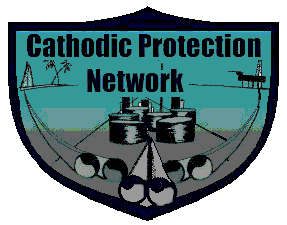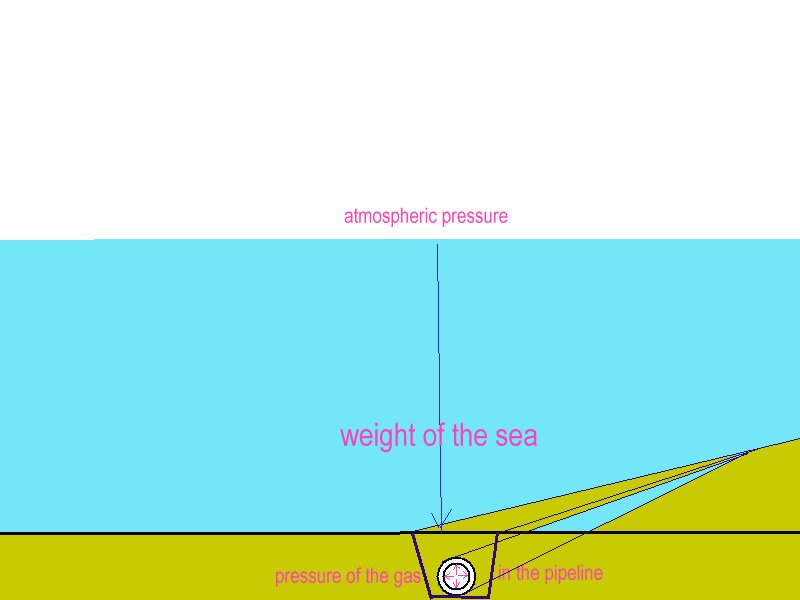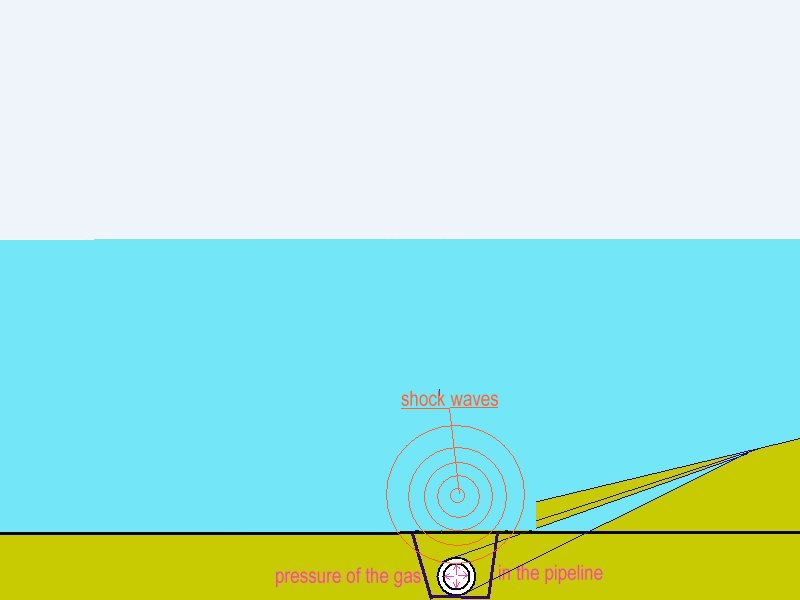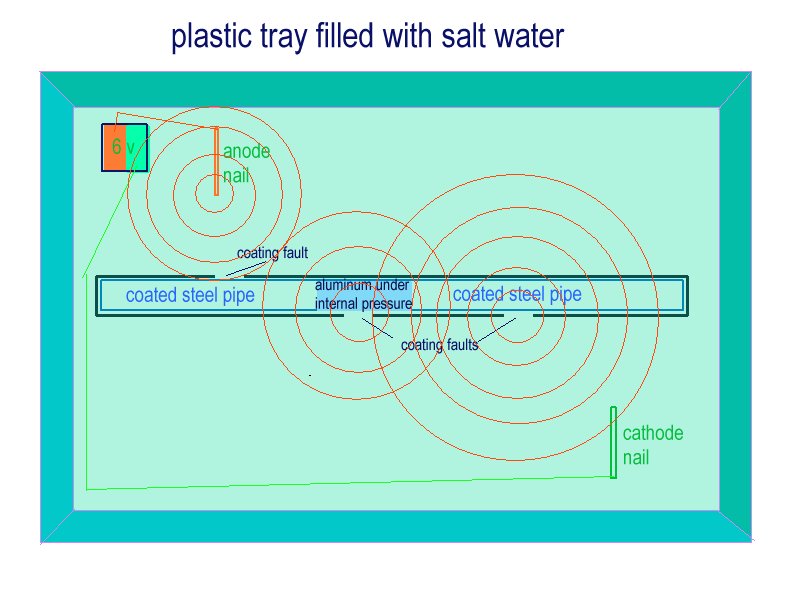
Cathodic Protection Network
Roger Alexander
Founder of Cathodic protection Network
Information required
In order to carry out an investigation into this matter we need the following.
All 'as built' drawings of the subject of this document.
Specifications of corrosion control system.
Details of the pressures at which the pipeline is operation and the static pressure at the time of the explosion.
Details of all metals used in the construction of the pipeline and the collar sacrificial anodes.
Details of all electrical aspects such as grounding, isolation joints and flanges.
All electrical energy data that has been acquired and reported. (maintenance and survey reports)
Geological reports of the whole area.
Detailed maps showing the locations of energy generating facilities and all high energy distribution systems.
Reports of corrosion damage from all sources including newspapers and media.
Reports of any interference with any of these assets by anyone.
All legal documents relating to these assets.
Environmental reports.
Ownership, land and wayleave documents.
WE DO NOT HAVE THIS INFORMATION, SO THIS PAPER IS BASED ON
INFORMATION AND DATA IN THE PUBLIC DOMAIN AND RESULTS OF EXPERIMENTS AS PROOF OF CONCEPT.
This scientific paper is for presentation at specialised conferences and for the attention of financial controllers, CEOs, government officials
There are many pictures available on Wikipediaa and Google as well as from mainstream and social media. None of these are acceptable as investigation evidence as they do not stand scrutiny.
There are videos but these are directed at defined conclusions by the presenters.
CPN has case studies of pipeline explosions and the results of pipeline explosions in real life.
We do not have the original report of these explosions but have witnessed first hand.
The definition of 'explosion' is very important.
A violent shattering or blowing apart of something, as is caused by a bomb.
"three explosions damaged buildings at the barracks" Not applicable.
What is the scientific definition of explosion?
An explosion is defined as the rapid increase in volume and release of energy in an extreme manner. Applicable.
What is the legal definition of explosive?
(d) Except for the purposes of subsections (d), (e), (f), (g), (h), (i), and (j) of section 844 of this title, "explosives" means any chemical compound mixture, or device, the primary or common purpose of which is to function by explosion; the term includes, but is not limited to, dynamite and other high explosives, Lots of words that mean nothing
What is difference between burst and explode?
Balloons, bubbles, cushions, blisters and tummies can burst.
Explode means there's an internal force or reaction (chemical, pressure, nuclear) which destroys its container, and perhaps damages the surrounding area.
A bomb can explode, but not burst. Often you'll see these words used figuratively.Very significant
What are the three types of explosion?
There are three main types of explosions: chemical, mechanical and nuclear. Each type of explosion can be equally devastating and serious, causing unprecedented harm to the surrounding people, atmosphere and infrastructure. Therefore, understanding different types of explosions and how they occur is important.Applicable.
What happens when something explodes?
Blast Effects
As the reaction progresses, the solid or liquid explosive material is converted to very hot, dense, high-pressure gas. The explosion products initially expand at very high velocities in an attempt to reach equilibrium with the surrounding air, causing a shock wave.Very significant
What are three characteristics of all explosions?
All explosions, regardless of their source, are characterized by a large release of energy, the production of gas molecules that expand quickly, and a rapid rate of reaction.Very significant
What is physical explosion?
Physical explosions occur when there is a sudden release of mechanical energy, such as the discharge of a compressed gas. These types of physical explosions include vessel rupture and rapid phase transition explosion.Very significant
In summary, a submarine pipeline bursts and causes a shock wave in the media to which it is released which is at a lower pressure.





The pipeline metal is corroded to destruction and the inside pressure is released splitting the weakened area until physical equilibrium is attained with gas flowing out against all the pressures bearing from the atmosphere and the weight of the sea.
The gas bubbles up against reducing pressures until on the surface it only meets atmospheric pressure.
The gas is heavier than air and then spreads out according to the inverse square law of radiation until the pressure of gas equals the pressure of the air and then becomes subject to the winds and natural air movement at this level.
Before the network of high pressure gas mains was constructed in the UK I was an industrial safety officer for William Press pipeline company in the south of England and witnessed the test to destruction of steel pipelines by the Gas Council, that was the public organisation that owned the gas industry at that time.
The pipes were 24"dia steel coated with glass reinforced coal tar enamel in 40 ft lengths butt welded into pipelines about 240 feet long and buried under a variety of back fill materials and the ground surface was reinstated with a variety of materials including concrete and road paving.
Before backfill, a grinder cut into the top of the metal on one section of pipe to a depth of about 1/8 inch and a small detonator fitted under a strengthening steel plate that was tack welded over the cut. The lead to the detonator was about 30 meters long and to a protective bunker for spectators and operatives. The weakening cut was not near the seam weld or the butt weld of the pipe section.
The pipeline was capped off at both ends with domes and a high pressure pump brought the pressure to hoop stress yield level before the strenthening plate was blown off. There was a loud explosion and debris thrown about 50 meters into the air. The pipe metal was split for about 1/2 meter in a jagged opening. The depth of cover had been 1 meter and the results were the same under a variety of top surfaces.
During an Explosives Safety Course I learnt demolition and the use of explosives in a variety of engineering practices.
Explosives are unstable chemicals that are triggered by shock waves generated by electrical energy. The source of this energy can be a battery or a manual generator that you wind up to charge a capacitor that releases the energy at the required level to create the shock wave.
During the period of setting up and detonating the explosives all radio transmissions are banned because the detonating wires could be excited by radio wave energy and trigger the detonator. This is what kills many amateur bomb makers.
To set up and trigger a massive chemical explosion under the sea would need very specialised divers who would have to be registered to get employment, so an investigator could easily and legally identify each of the very few such persons in the world.
We experience the aerial effect of long thin wires when conducting CIPS surveys as these cause fluctuations in the readings. This was established during an investigation that I conducted into the effect of sunspots on pipeline corrosion.
Using the principles established during the three nails experiment it is possible to demonstrate how stray current can cause a pressure vessel to explode.
I set up this experiment as follows


It has been said that if you cannot explain it to a child, you probably do not understand it yourself. This is very true of a report by an investigator or politician publishing misinformation.
Scientific information must be exact, as it is available for scrutiny on the internet and this subjects it to the unrestricted 'peer review'.of specialists world wide.










